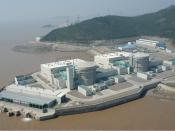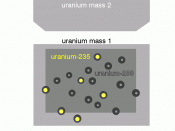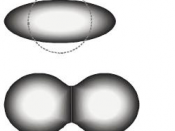One of the most interesting phenomena in Nuclear Physics with far reaching consequences is nuclear fission. Nuclear fission is defined as the splitting of heavy nuclei to release energy. This aspect holds many opportunities and possibilities for our technologically advancing world.
Fission Process (Theory)
In the case of large atoms, such as Uranium, the impact of a particle on the nucleus loosens its binding force. The impact causes the nucleus to break apart into pieces, also known as fission fragments.
These pieces contain a nucleus with approximately half the protons and neutrons of the original nucleus; they fly at very high speeds and possess high amounts of energy. This energy is released in many forms, but most energy released by fission eventually takes the form of heat. This process is called fission.
"Fission occurs because of the electrostatic repulsion created by the large number of positively charged protons contained in a heavy nucleus."
Because one large nucleus has more electrostatic repulsion than two smaller nucleuses, it must overcome its binding force that holds it together before it can fission. "Fission can be seen as a "tug-of-war" between the strong attractive nuclear force and the repulsive electrostatic force." When fission occurs, it happens because
the electrostatic repulsion is stronger than the binding forces.
Applications
Nuclear fission is used to produce the energy provided by nuclear reactors in nuclear power stations. There are over 400 power plants in more than 30 countries worldwide, 100 of which are situated in the United States. "The energy produced by these power stations generates 17% of the world's electricity." Nuclear fission reactors have proven to be a practical energy source, "the fission of an atom of uranium produces 10 million times the energy produced by the combustion of an atom of carbon from coal." It has...


